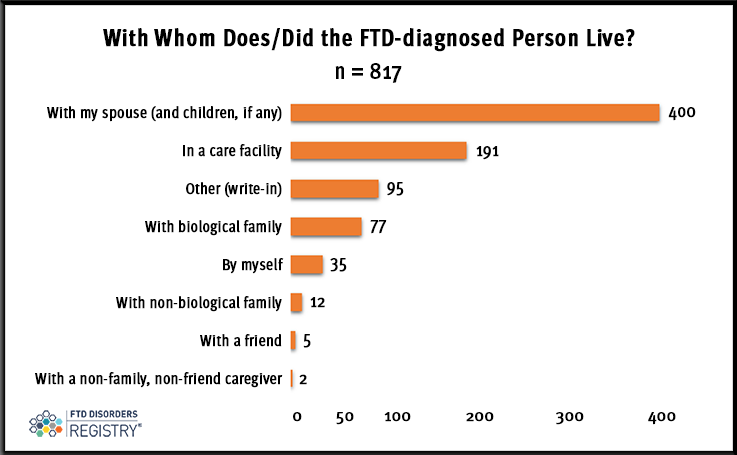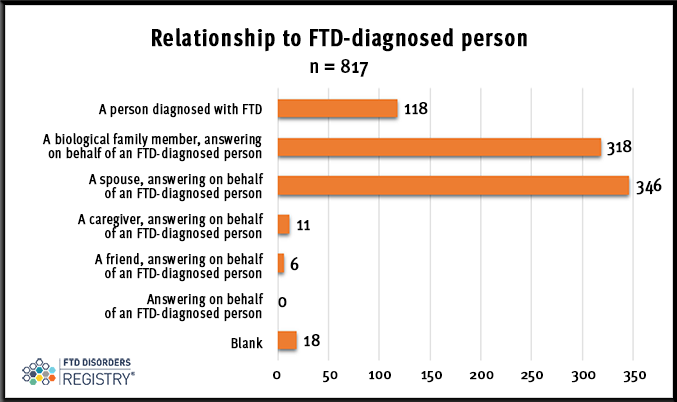PRESS & NEWS
Quick Question December 2022 Results: With Whom Does/Did the FTD-diagnosed Person Live?

Of the 817 responses to our Quick Question, nearly half (400) indicated that the FTD-diagnosed person lives or lived with their spouse and children ...
In December, the FTD Disorders Registry asked “With Whom Does/Did the FTD-diagnosed Person Live? Of the 817 responses to our Quick Question, nearly half (400) indicated that the FTD-diagnosed person lives or lived with their spouse and children, if any. The next most frequent choice was the person diagnosed living in a care facility (191).
Write-in answers to the question included similar responses as those offered in the multiple-choice options. Several people named the specific relative or friend with whom the FTD-diagnosed person lives/lived.
There were 15 people who indicated that the FTD-diagnosed person had lived in multiple places during the course of their disease. Additionally, 30 people noted that their FTD-diagnosed loved one was deceased.
Answers were received from people in 22 countries around the world, with the majority received from the United States (728) followed by Canada (45).
In addition, replies came from people in 48 U.S. states plus the District of Columbia (4). The three states with the highest number of respondents were California (76), New York (51), and Texas (48).
The majority who replied — 660 (81%) — identified as spouses (346) and biological family members (314).
RESULTS
The following charts and lists are based on 817 submissions.

With whom does/did the FTD-diagnosed person live?
- With my spouse (and children, if any), 49% (400)
- In a care facility, 23% (191)
- Other (write-in), 11% (95)
- With biological family, 10% (77)
- By myself, 4% (35)
- With non-biological family, 1.5% (12)
- With a friend, 1% (5)
- With a non-family, non-friend caregiver, 0.5% (2)

Relationship to FTD-Diagnosed person
- A person diagnosed with FTD, 14.5% (118)
- A biological family member, answering on behalf of an FTD-diagnosed person, 39% (318)
- Spouse, answering on behalf of an FTD-diagnosed person, 42% (346)
- Caregiver, answering on behalf of an FTD-diagnosed person, 1.5% (11)
- Friend, answering on behalf of an FTD-diagnosed person, 1% (6)
- Blank, 2% (18)
You can access questions and responses from this past year on the Quick Questions 2022 webpage.
Together we can find a cure for ftd
The FTD Disorders Registry is a powerful tool in the movement to create therapies and find a cure. Together we can help change the course of the disease and put an end to FTD.
Your privacy is important! We promise to protect it. We will not share your contact information.



